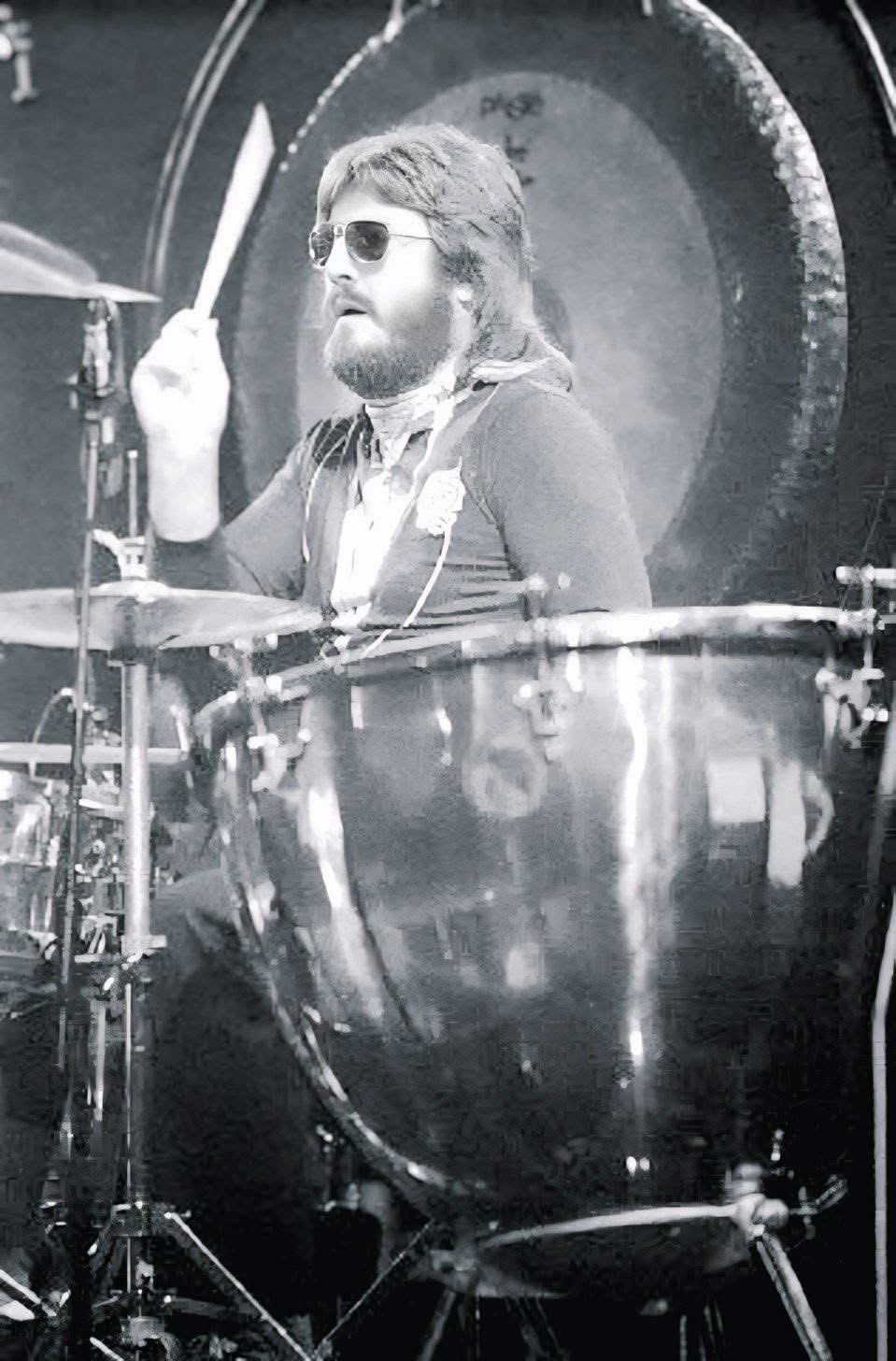John Bonham’s drumming was nothing short of revolutionary, blending raw power with subtle finesse to redefine the role of drums in rock music. Known for his massive Ludwig drum kits, Bonham often used a 26-inch bass drum, which delivered a deep, resonant thump that became a signature of Led Zeppelin’s sound. Unlike many of his contemporaries who favored flashy fills and excessive showmanship, Bonham emphasized feel and groove. His playing was heavy and tight, yet swung with an organic, natural rhythm that grounded the band’s thunderous sound.
Bonham’s mastery lay in his use of ghost notes, syncopation, and dynamic control, adding layers of subtle complexity beneath the surface of Zeppelin’s powerful rock anthems. One of his most celebrated techniques was playing rapid-fire triplets on a single bass drum pedal, as famously showcased in “Good Times Bad Times.” This innovation amazed musicians of the time and continues to influence drummers today. His hi-hat work was equally meticulous, providing crisp articulation and driving the pulse forward with precision.
In the studio, Bonham’s drumming took on new dimensions. On tracks like “When the Levee Breaks,” engineers captured his sound by placing microphones at the top of a stairwell, creating a massive, cavernous drum tone that became one of the most sampled and revered in music history. His drum solos, particularly “Moby Dick,” combined technical virtuosity with primal energy, often performed live with bare hands, showcasing his physical connection to the instrument.
Bonham treated the drum kit as more than just a rhythm section; it was a powerful voice within Led Zeppelin’s music. Decades after his untimely death, John Bonham remains the gold standard for rock drummers, inspiring countless musicians across genres and generations with his unique blend of power, groove, and musicality.










